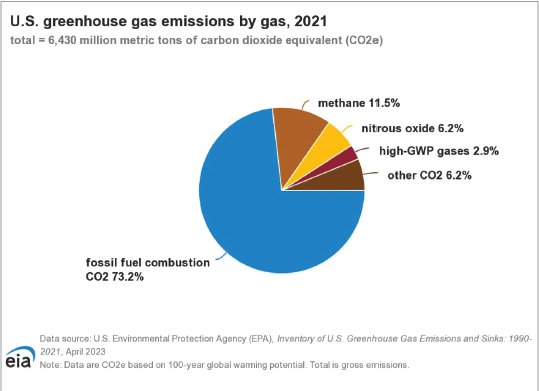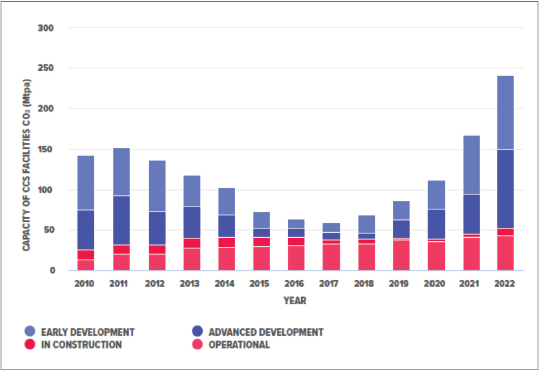Climate change mitigation strategies are at the forefront of discussions regarding how the global population and various governments can achieve the ambitious greenhouse gas (GHG) reduction commitments needed to achieve the Paris Accords 2015 stated goal of limiting global warming to below 2°C, but with a target of 1.5°C, above preindustrial levels.1 An ambitious endeavor of such magnitude raises the question, how is such a goal accomplished?
By Foster Voelker II, Director of Engineering – Williams Valve Corporation
Climate Change Mitigation Goals
According to the United Nations, “More than 70 countries, including the biggest polluters – China, the United States, and the European Union – have set a net-zero target, covering about 76% of global emissions. More than 3,000 businesses and financial institutions are working with the Science-Based Targets Initiative to reduce their emissions in line with climate science. And more than 1,000 cities, over 1,000 educational institutions, and over 400 financial institutions have joined the Race to Zero, pledging to take rigorous, immediate action to halve global emissions by 2030.”2 An ambitious endeavor of such magnitude raises the question, how is such a goal accomplished? The answer to this question is multifaceted requiring significant innovation and is the cutting edge of research and development across many industries.
The fossil fuel and energy sectors are an obvious focus. Based on data from the U.S Energy Information Administration, “In 2021, Fossil fuel combustion (burning) for energy accounted for 73% of total U.S. GHG emissions and for 92% of total U.S. anthropogenic carbon dioxide (CO2) emissions. CO2 emissions from other anthropogenic sources and activities were about 6% of total GHG emissions and 8% of total CO2 emissions.”3 Mitigation techniques, such as carbon capture and storage (CCS), are critical in achieving next-zero emission goals.
Growth of Carbon Capture & Storage (CCS)
Carbon capture and storage, as the name implies, is the process of capturing carbon dioxide emissions prior to entering the atmosphere for safe storage. The IPCC defines carbon capture and storage as “a process consisting of the separation of CO2 from industrial and energy-related sources, transport to a storage location, and long-term isolation from the atmosphere.”5 Carbon capture technology typically focuses on large point sources of CO2 emissions from industries such as power, refining, steel manufacturing, and petrochemicals.

According to the Global CCS Institute, there has been a notable surge in CCS investment activities, as reported in the Global Status of CCS 2022 report, which has continued to rise. As of September 2022, the total capacity of CCS projects in development reached 244 million tonnes per annum (Mtpa) of CO2, marking a 44% increase in the past year. This growth is primarily fueled by the private sector’s response to societal expectations and evolving government policies advocating for a net-zero emissions future.7
In the United States, the Infrastructure Investment and Jobs Act assigned more than USD $12 billion for CCS and associated initiatives. This funding included USD $2.5 billion for verifying carbon storage, USD $8 billion for hydrogen hubs (including blue hydrogen), and over USD $200 million for CCS technology development by the US Department of Energy. Moreover, the Inflation Reduction Act was enacted, bolstering the 45Q tax cred- it and accelerating CCS implementation by extending construction timelines, lowering capture thresholds, and expanding transferability. Several US states, namely Pennsylvania, West Virginia, North Dakota, and California, advanced legislation concerning CO2 storage and established programs supporting CCS.
In Canada, a CAD $2.6 billion tax credit was set up for CCS projects, while Saskatchewan extended its 20% tax credit under the province’s Oil Infrastructure Investment Program to pipelines transporting CO2.
Across Europe, Denmark revealed €5 billion in subsidies for CCS, Norway earmarked NOK1 billion (USD $100 million) to back three major blue hydrogen projects, and various CCS projects were selected under the European Union’s Innovation Fund, encompassing endeavors in bioenergy with CCS, cement production, hydrogen manufacturing, and ammonia and ethylene plant production.
The UK government published its CCUS Investor Roadmap, outlining intentions to create four CCUS low-carbon industrial clusters by 2030, with the initial selection of the East Coast and HyNet clusters.
Advancements in climate policy are underway in the Asia-Pacific region as well. In Australia, the government increased the availability of land for storing CO2 geologically, authorized a method allowing CCS to generate Australian carbon credits, and committed over AU $200 million to support CCS initiatives. In Japan, the government approved its Sixth Strategic Energy Plan, highlighting the significance of CCS in attaining net-zero emissions by 2050. The Chinese State Council introduced more than 10 national policies and guidelines advocating for CCS. Furthermore, Indonesia, Malaysia, and Thailand each made progress in developing legislation for the geological storage of carbon dioxide.

CCS & Fossil Fuel Power Generation
In May of 2023, the United States Environmental Protection Agency (EPA) introduced proposed Clean Air Act regulations, outlining emission limits and guidelines for CO2 from fossil fuel-fired power plants. In the proposed rule titled “New Source Performance Standards for Greenhouse Gas Emissions From New, Modified, and Reconstructed Fossil Fuel-Fired Electric Generating Units; Emission Guidelines for Greenhouse Gas Emissions From Existing Fossil Fuel-Fired Electric Generating Units; and Repeal of the Affordable Clean Energy Rule,” EPA advocates for Carbon Capture and Storage (CCS) as an effective measure to mitigate emissions from existing combustion turbines, particularly those frequently in operation.4
The EPA justifies the proposed rule on the basis that multiple companies are contemplating incorporating CCS into existing fossil fuel-fired power plants, with various feasibility studies already conducted. Additionally, the availability and expansion of CO2 pipelines in the United States, regulated by the Pipeline and Hazardous Materials Safety Administration (PHMSA), provides the necessary infrastructure for transporting CO2 to sequestration sites. The EPA expects that many existing combined cycle units can integrate and operate CCS at a reasonable cost.4
Analyzing the emission reduction potential and the capacity to install CCS, the EPA projects a significant increase in CCS retrofits by 2035. Considering the potential of CCS implementation, the EPA emphasizes the importance of setting appropriate capacity and utilization thresholds to determine the coverage of existing turbines under the proposed emission guidelines. The EPA currently proposes that CCS, with a 90 % capture rate, is both technically and economically viable for existing turbines exceeding 300 megawatts and operating at over 50% capacity. Consequently, the EPA is considering a capacity threshold of 300 megawatts, although the EPA acknowledges the feasibility of setting lower capacity thresholds, such as 200 or 100 megawatts. The EPA recently invited comments from stakeholders to gauge the practicality of such proposals.
Drawing parallels with the historical deployment of emission control technologies like flue gas desulfurization (FGD), the EPA remains optimistic about the industry’s ability to rapidly upscale CCS installations in response to regulatory imperatives.4

Conclusion
In conclusion, the imperative to mitigate climate change has led to a significant global focus on reducing greenhouse gas emissions, aligning with the Paris Agreement’s ambitious goals. Efforts to address this challenge have sparked notable investments and policy advancements in the carbon capture and storage sector worldwide. The United States, Canada, and various European nations have allocated substantial funds and introduced legislative measures to bolster CCS initiatives and related activities.
Additionally, Asia-Pacific countries, including Australia, Japan, and China, are making significant strides in developing CCS-related policies and regulations. The momentum in this field is further underscored by the United States EPA’s advocacy for CCS as an effective strategy in curbing emissions from existing combustion turbines. By emphasizing the feasibility and economic viability of CCS, regulatory bodies like the EPA are paving the way for the continued expansion of this industry. As global discussions increasingly prioritize the reduction of carbon emissions, the carbon capture and storage sector is positioned to play an essential role in achieving these ambitious climate targets.
References:
- https://unfccc.int/process-and-meetings/the-paris-agreement/the-paris-agreement
- https://www.un.org/en/climatechange/net-zero-coalition
- https://www.eia.gov/energyexplained/energy-and-the-environment/where-greenhouse-gases-come-from.php
- https://www.federalregister.gov/ documents/2023/05/23/2023-10141/new-source-performance-standards-for-greenhouse-gas-emissions-from-new-modified-and-reconstructed#h-285
- https://www.ipcc.ch/site/assets/uploads/2018/03/ srccs_wholereport-1.pdf
- https://www.regulations.gov/document/EPA-HQ-OAR-2023-0072-0057
- https://www.globalccsinstitute.com/resources/global-status-of-ccs-2022/



